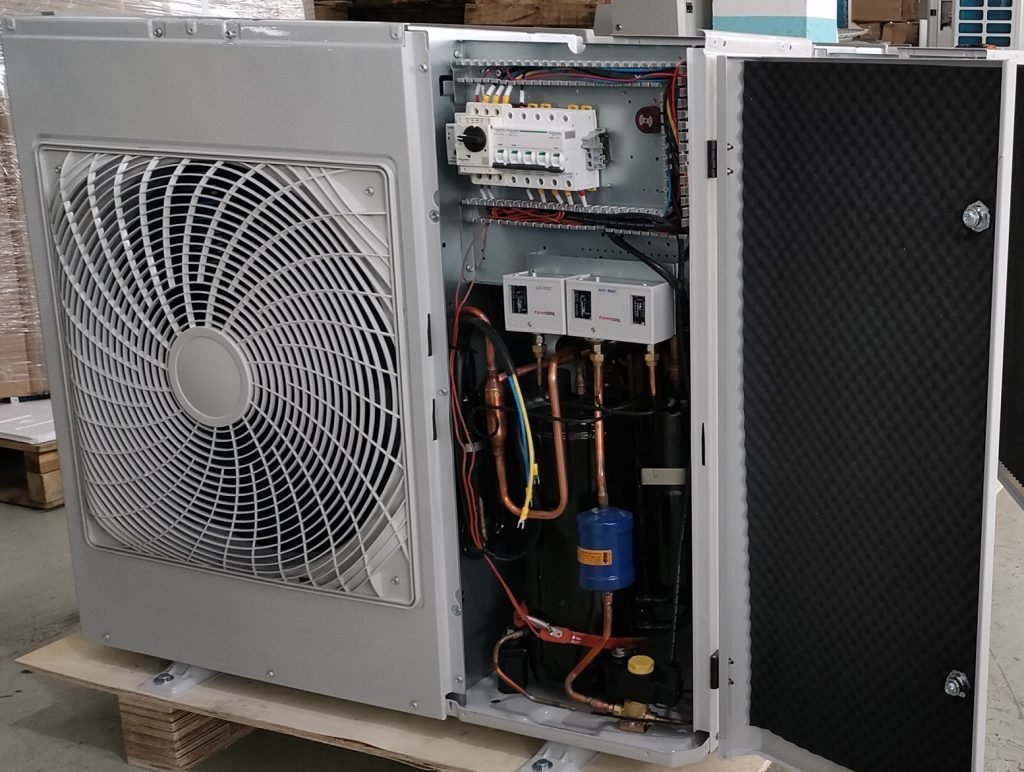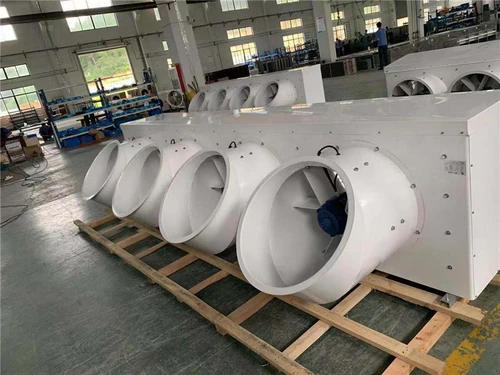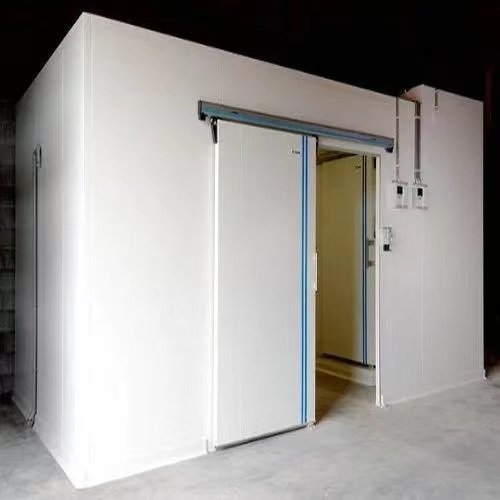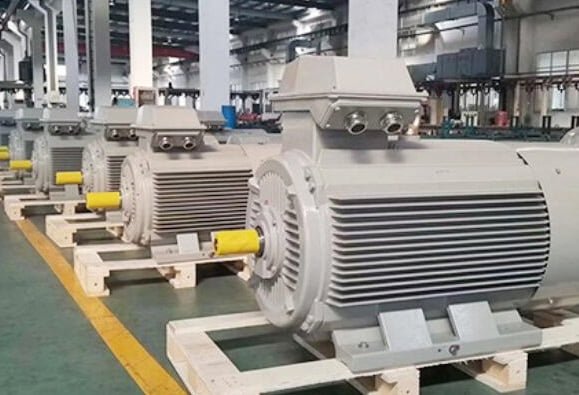Stanza fredda corrispondenze unità di raffreddamento E unità di refrigerazione Per raffreddare gli articoli di archiviazione. Il dispositivo di raffreddamento dell'unità ha un componente importante—“ventola del motore”, Le lame della ventola ventilato l'aria nella stanza fredda per scambiare calore con l'evaporatore, raffreddando così la temperatura ambiente.
Cos'è il motore della ventola assiale?
Il motore della ventola assiale è un dispositivo di ventilazione la cui direzione del vento è parallela all'asse della ventola. Il suo principio di lavoro è convertire l'energia elettrica in energia eolica e accelerare l'aria attraverso le lame rotanti per ottenere la ventilazione, rimozione della polvere, raffreddamento e altri effetti.
Struttura del motore del ventilatore assiale
Motore della ventola assiale composto principalmente dalla girante, telaio, motore e altre parti.

Girante: La girante è la componente principale, composto da lame e hub.
Telaio: Usato per correggere la girante e il motore, e svolge anche un ruolo protettivo.
Il motore: Il motore è la fonte di alimentazione del motore della ventola assiale, guidando la girante a ruotare.
Classificazione del motore della ventola assiale
Secondo la forma della lama, Il motore della ventola assiale può dividersi in
1. Tipo curvo in avanti: L'angolo di ingresso della lama è > 90 °, Il volume dell'aria è grande, Ma l'efficienza è bassa, e adatto a luoghi con requisiti di volume d'aria elevato.
2. Tipo curvo all'indietro: L'angolo di ingresso della lama è < 90 °, L'efficienza è alta, Ma il volume dell'aria è piccolo, e adatto a luoghi con requisiti di pressione del vento elevato.
3. Tipo radiale: L'angolo di ingresso della lama è 90 °, ed è adatto per i luoghi di ventilazione generali.
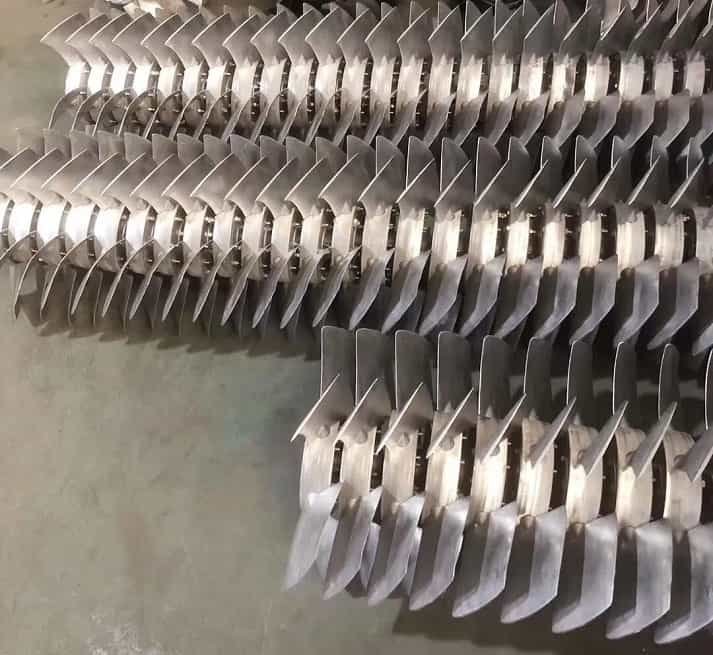
Lama
Caratteristiche del motore della ventola assiale
1. Struttura semplice: Il motore della ventola assiale ha una struttura compatta, facile da installare, e occupa una piccola area.
2. Grande volume d'aria: Il motore della ventola assiale ha un grande volume d'aria ed è adatto per la ventilazione in grandi luoghi.
3. Basso rumore: Realizzato con materiali di alta qualità, e il rumore è basso.
4. Alta efficienza: La girante del motore della ventola assiale è coerente con la direzione del flusso d'aria, che riduce la perdita del flusso d'aria e migliora l'efficienza.
Applicazione del motore della ventola assiale
1. Industria: Ventilazione, Rimozione e raffreddamento della polvere nelle fabbriche, miniere, tunnel e altri luoghi.
2. Costruzione: Ventilazione e aria condizionata sistemi negli edifici.
3. Trasporti: Ventilazione e raffreddamento di veicoli e navi.
4. Protezione ambientale: Trattamento del gas di scarto, purificazione dell'aria, eccetera.
5. agricoltura: Ventilazione e raffreddamento stanze fredde e fattorie.
Come selezionare il motore del ventilatore assiale corretto?
Requisito del volume dell'aria
1. Deve determinare il volume dell'aria richiesto. Questo dipende dallo scopo del sistema di ventilazione e dalle dimensioni dello spazio.
2. Stimare ca.. Requisiti del volume dell'aria calcolando il volume dello spazio, tempi di ventilazione, eccetera.
Requisito della pressione dell'aria
1. Considera la resistenza nel sistema, Lunghezza del condotto dell'aria inclusa , grado di curvatura, perdita di pressione (causato dal filtro,eccetera).
Per esempio, Quando il condotto dell'aria è lungo e ha più gomiti, IL ventola del motore deve avere una pressione dell'aria più elevata per superare queste resistenze.
Velocità e potenza
1. La velocità influisce sulle prestazioni del motore della ventola e il livello di rumore. Generalmente, L'alta velocità può fornire un maggiore volume dell'aria e pressione dell'aria, Ma il rumore può anche essere maggiore.
2. La dimensione del potere è correlata al consumo di energia. Seleziona necessariamente il motore della ventola con energia adeguata per risparmiare costi energetici.

Ambiente di lavoro
1. Se ci sono condizioni speciali come i gas corrosivi, polvere o alta temperatura nell'ambiente di lavoro, Seleziona necessariamente il motore della ventola con prestazioni protettive corrispondenti.
Per esempio, in un sito chimico, richiedono il motore della ventola resistente alla corrosione; in un ambiente ad alta temperatura, richiedere il motore della ventola che può resistere a temperature elevate.
Requisito del rumore
1. Per luoghi sensibili al rumore, come uffici e ospedali, dovrebbe selezionare motore a ventola assiale a basso rumore.
2. Controllare i parametri di rumore del motore della ventola e ridurre ulteriormente il rumore installando silenziatori e altre misure.
Motore della ventola assiale Utilizzare la precauzione
Installazione sicura
Assicurarsi che il motore della ventola sia installato su una base stabile e solida per prevenire le vibrazioni e lo spostamento durante il funzionamento. Se l'installazione non è sicura, farà allentare le parti del motore della ventola e influenzerà le sue prestazioni e la vita.
Alimentazione abbinabile
Collegare l'alimentazione rigorosamente in base alla tensione e alla frequenza nominale per evitare eventuali danni al motore della ventola assiale causata da alimentazione instabile o non corrispondente.
Se la tensione è troppo alta, Il motore verrà bruciato; Se la tensione è troppo bassa, La velocità del motore della ventola sarà insufficiente, influenzando l'effetto di ventilazione.
Lubrificazione e manutenzione
Per parti che richiedono lubrificazione, aggiungere olio lubrificante o grasso secondo le linee guida per garantire le parti’ operazione normale.
Evita il sovraccarico
Non eseguire il motore della ventola assiale per lungo tempo ad un carico che supera il suo carico nominale, poiché ciò abbrevia la sua vita.
Misure protettive
Installare griglie protettive o coperture protettive per impedire alle persone di toccare accidentalmente componenti rotanti e causare lesioni.
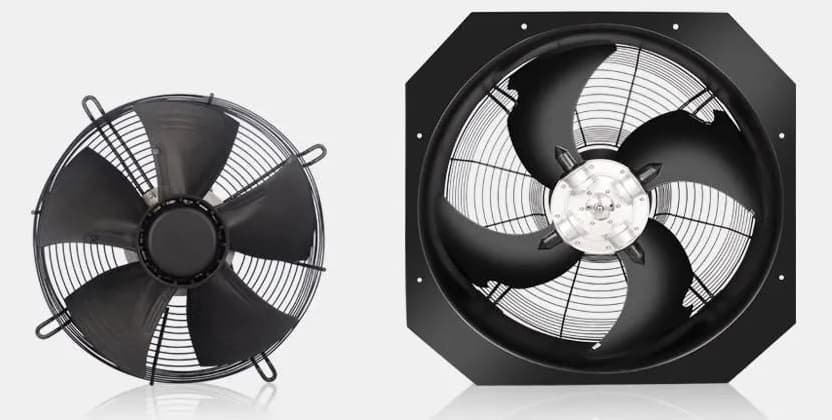
Ambiente
Garantire che l'ambiente di lavoro del motore della ventola soddisfi i suoi requisiti di progettazione ed eviti il funzionamento a lungo termine in ambienti difficili come l'umidità, alta temperatura, e corrosività.
Per esempio, In ambienti altamente corrosivi come il mare, Seleziona necessariamente il motore della ventola con proprietà anticorrosivi e mantieni il rivestimento protettivo.
Operazione di spegnimento
Segui i passaggi corretti per spegnere ed evitare operazioni improprie come improvvise insufficienza di corrente.
L'arresto improvviso può causare un impatto sul motore e sulle parti di trasmissione.
Gestione anormale
Durante il funzionamento, Se qualche rumore anormale, vibrazione, Aumento della temperatura, eccetera, Deve fermare immediatamente la macchina per l'ispezione e utilizzata dopo l'eliminazione dell'errore.
Risoluzione dei problemi del motore della ventola assiale
| Colpa | Motivo | Risoluzione dei problemi |
|---|---|---|
| Il motore non si avvia | Errori di alimentazione o fusibile soffiato | Controllare la sorgente di alimentazione e sostituire i fusibili soffiati. |
| Motore sovraccarico | Ispezionare per il sovraccarico; Ridurre il carico o verificare la presenza di blocchi nella ventola. | |
| Cablaggio difettoso | Ispezionare e riparare/sostituire il cablaggio danneggiato o le connessioni sciolte. | |
| Surriscaldamento del motore | Sovraccarico o motore sottodimensionato | Ridurre il carico; Garantire che la capacità del motore corrisponda ai requisiti dell'applicazione. |
| Scarsa ventilazione o assunzione di aria bloccata | Chiare ostruzioni attorno al motore; Garantire un flusso d'aria adeguato per il raffreddamento. | |
| Problemi portanti | Ispezionare e lubrificare o sostituire i cuscinetti. | |
| Operazione rumorosa | Parti o componenti sciolti | Stringere bulloni, viti, o eventuali componenti sciolti sul gruppo del motore della ventola. |
| Cuscinetti danneggiati o parti usurate | Controllare i cuscinetti per l'usura e sostituire se danni; ispezionare le lame della ventola e sostituire. | |
| Vibrazione del motore | Blade di ventola squilibrate | Bilancia le lame della ventola per ridurre le vibrazioni. |
| Disallineamento tra motore e ventola | Assemblaggio di motori e ventole realistici. | |
| Supporti per motori danneggiati o fondamenta | Ispezionare i supporti del motore, e proteggere o sostituire se necessario. | |
| Motore della ventola che funziona lentamente | Emissione di alimentazione della tensione o tensione errata | Verificare che la tensione corrisponda alle specifiche del motore; affrontare eventuali problemi di fornitura. |
| Lame di ventola sporca o bloccata | Pulire le lame della ventola e rimuovere eventuali detriti bloccando il flusso d'aria. | |
| Consumo energetico eccessivo | Caduta di alimentazione o tensione a bassa tensione | Misurare la tensione sul motore; Risolvi i problemi con l'approvvigionamento o il cablaggio di aggiornamento. |
| Avvolgimenti del motore difettosi | Eseguire un test di resistenza all'isolamento dell'avvolgimento; Sostituire il motore se gli avvolgimenti sono danneggiati. | |
| Flusso d'aria irregolare | Assunzione di fan parzialmente bloccata | Area di assunzione pulita; Rimuovere la polvere o i detriti che ostruiscono il flusso d'aria. |
| Lame di ventola danneggiate o deformate | Sostituire le lame danneggiate per garantire un flusso d'aria liscio. | |
| Posizionamento improprio della ventola che causa problemi di backdraft | Garantire una spaziatura adeguata intorno al fan; riposizionamento se il flusso d'aria è limitato dall'ambiente. | |
| Usura eccessiva del cuscinetto | Disallineamento o squilibrio causando stress ai cuscinetti | Motore e ventola riallineati; Equilibrio il carico uniformemente. |
| Scarsa lubrificazione o lubrificante inappropriato usato | Lubrificare con lubrificante consigliato a intervalli regolari. | |
| Il motore emette un odore ardente | Surriscaldamento a causa di guasti elettrici o danno all'isolamento | Ispezionare i segni di isolamento o cablaggio bruciato; Sostituisci il motore se ha avvolgimenti bruciati. |
Conclusione
I motori della ventola assiale sono componenti essenziali in vari sistemi di ventilazione e raffreddamento, Offrire un'alta efficienza, affidabilità, e versatilità.
La loro capacità di spostare grandi volumi aria con un consumo minimo di energia li rende ideali per applicazioni dall'uso industriale a residenziale.
Selezione adeguata, manutenzione, e la comprensione delle loro caratteristiche di prestazione è la chiave per massimizzare la loro efficienza e una lunga durata.
Eventuali commenti?
Benvenuto, lascia un messaggio o ripubblicalo.




